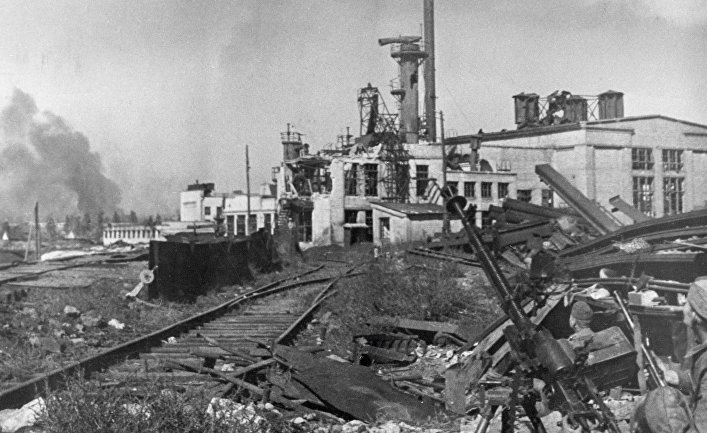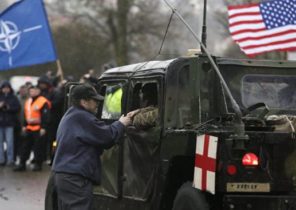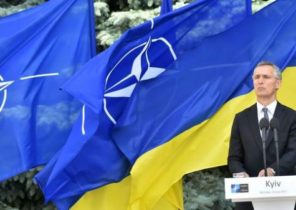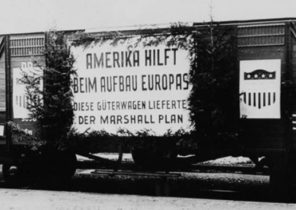
To fly the desired aircraft and airfields. The group of armies “South” of the armed forces of the Wehrmacht in the third week of January 1943 had enough transport vehicles; not that too much, but, after all, hundreds of combat-ready aircraft “Junkers” s 52 and Heinkel he-111. But what really was missing is the landing pads. So on 23 January 1943 was the last flight, designed to rescue the wounded out of the Stalingrad “cauldron”.
When the Red army on 22 November 1942, had surrounded the 6th army of Friedrich Paulus (Friedrich Paulus) to the ruins of the city on the Volga, under the control of the Germans were still seven usable landing sites. They were all on the West Bank of the Volga, at a distance of from 10 to 28 km from the town centre, which has been heavy fighting. But day after day, the Red army increasingly narrowed the encirclement, mainly after the Germans stopped their attempts to release the army just before Christmas. The Germans lost the landing pad one after the other until, until on the third week of January to plant the aircraft was only on a makeshift airfield called “Stalingrad”.
Several Soviet artillery batteries opened fire on him. And when the planes came in to land, the Russians only increased the fire. Some aircraft were hit by shells immediately before or after planting or received so much damage from debris that could fly back in total, the Germans during the existence of the “air bridge” to supply the 6th army lost nearly half of those involved in 1000 transport vehicles; on different data, from failed from 488 to 495 planes.
At the airport, “Stalingrad” hundreds of wounded were constantly hoping to get a chance to be saved from the “pot”. Permission to depart was given to the soldiers, which in the long term, the treatment in properly equipped hospital, could return to participate in military action. Severely wounded for several days did not receive such a chance — they could hardly overcome even the 10-mile path to the airfield in conditions of freezing cold weather.
22 Jan 1943 Fritz Hartnagel (Fritz Hartnagel) got a chance to get out of the “pot” on the plane. The German officer that was about to hit 26 years, could no longer fight because of frostbite of the hands and feet. But he managed to get to the airport, “Stalingrad” and find the strength to reach the just landed plane and climb aboard. When the planes of the three restored Heinkel —filled, crew members had to push away the rifles of the wounded, trying to squeeze inside. Desperate soldiers clung even chassis.
Fritz Hartnagel beloved Sophie Scholl (Sophie Scholl), was one of the last soldiers evacuated from Stalingrad — but in fact, the next day, January 23, 1943, was held three successful flight. One of the crew members was 25-year-old Michael Deiml (Michael Deiml) from the city of Auerbach in the Upper Palatinate district.
Heinkel piloted by Peter Adrian along with a mechanic Daimler, this day flew from Novocherkassk at 7:25 and landed at the airport “Stalingrad” 9:20. “While unloading bags of bread all of a sudden, the shooting started, Russian ground attack aircraft” — later told Gimli: “I immediately jumped on a plane and started shooting from an onboard machine gun at the incoming us aircraft.” Fortunately, the plane was not damaged and none of the crew members and crowding around the wounded were not injured.
The second RAID the Russians are not followed. “We are in a hurry continued to unload the remaining sacks of bread. Suddenly we heard a thud and turned to see the rotating propeller of the left engine of our aircraft dropped the headless body of a German soldier. His head, on the left front of the chassis there were only traces of blood.” Man, from weakness or deliberately committed suicide. At 10:45 Heinkel flew back and landed in Novocherkassk at 12:20.
Three transport vehicles, landed on the morning of 23 January 1943 at Stalingrad was the last aircraft that still could land in the Stalingrad “cauldron”. Since the evening of the same day, Soviet troops occupied the airport; from that moment the Germans left no aerodrome suitable for landing. Over the next days Dimly and his comrades were dropped on parachutes “food bombs”, and the last two flights occurred in the night from 28 to 29 January 1945: “On the last dropped “the bomb” we got on the radio straight from the “pot”.
Two days later surrendered to the German troops surrounded in the southern districts of the ruined city, and on February 2 and the last located just North of military units. Ended the battle of Stalingrad. It cost the lives of 145 thousand Germans, the rest almost 100 thousand soldiers were captured, of which only 6000 returned home. Indicates that the red army’s losses amounted to 700 thousand dead and wounded. Of all the crew members of the last three transport aircraft survived the war only one — Michael Deiml. He died shortly before his 91 birthday in 2009.






